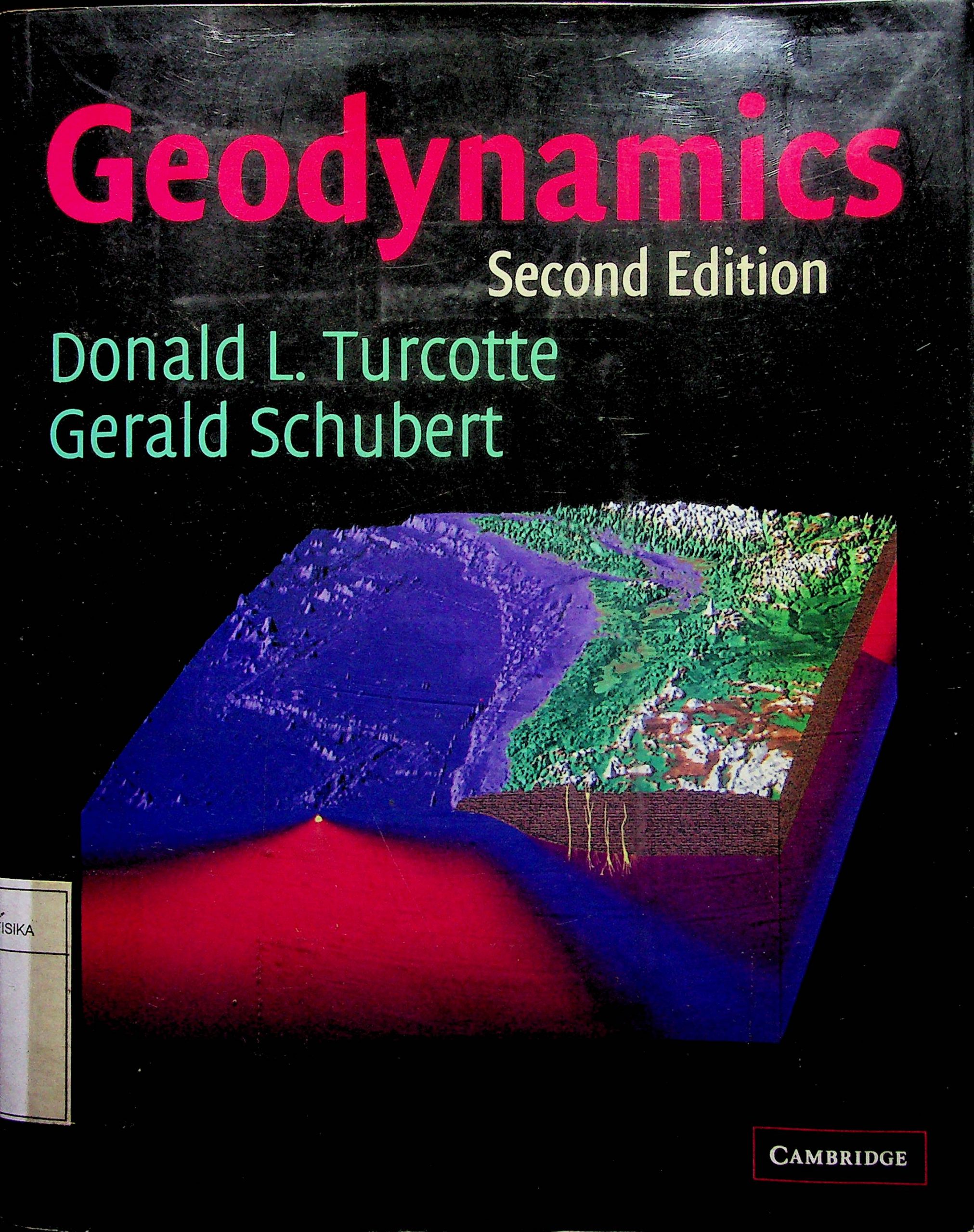This textbook deals with the fundamental physical pro cesses necessary for an understanding of plate tectonics and a variety of geological phenomena. We believe that the appropriate title for this material is geodynamicsThe contents of this textbook evolved from a series of courses given at Cornell University and UCLA to students with a wide range of backgrounds in geology, geophysics, physics, mathematics, chemistry, and engineerng. The level of the students ranged from advanced undergraduate to graduate.In all cases we present the material with a minimum of mathematical complexity. We have not introduced mathematical concepts unless they are essential to the understanding of physical principles. For example, our treatment of elasticity and fluid mechanics avoids the introduction or use of tensors. We do not believe that tensor notation is necessary for the understanding of these subjects or for most applications to geological problems. However, solving partial differential equations is an essential part of this textbook. Many geological problems involving heat conduction and solid and fluid mechanics require solutions of such classic partial differential equations as Laplace’s equation, Poisson’s equation, the biharmonic equation, and the diffusion equation. All these equations are derived from first principles in the geological contexts in which they are used. We provide elementary explanations for such important physical properties of matter as solidstate viscosity, thermal coefficient of expansion, specific heat, and permeability. Basic concepts involved in the studies of heat transfer, Newtonian and nonNewtonian fluid behavior, the bending of thin elastic plates, the mechanical behavior of faults, and the interpretation of gravity anomalies are emphasized. Thus it is expected that the student will develop a thorough understanding of such fundamental physical laws as Hooke’s law of elasticity, Fourier’s law of heat conduction, and Darcy’s law for fluid flow in porous media. The problems are an integral part of this textbook. It is only through solving a substantial number of exercises that an adequate understanding of the underlying physical principles can be developed. Answers to selected problems are provided. The first chapter reviews plate tectonics; its main purpose is to provide physics, chemistry, and engineering students with the geological background necessary to understand the applications considered throughout the rest of the textbook. We hope that the geology student can also benefit from this summary of numerous geological, seismological, and paleomagnetic observations. Since plate tectonics is a continuously evolving subject, this material may be subject to revision. Chapter 1 also briefly summarizes the geological and geophysical characteristics of the other planets and satellites of the solar system. Chapter 2 introduces the concepts of stress and strain and discusses the measurements of these quantities in the Earth’s crust. Chapter 3 presents the basic principles of linear elasticity. The bending of thin elastic plates is emphasized and is applied to problems involving the bending of the Earth's lithosphere. Chapter 4 deals mainly with heat conduction and the application of this theory to temperatures in the continental crust and the continental and oceanic lithospheres. Heat transfer by convection is briefly discussed
5
GEODYNAMICS
Don Turcotte and Jerry Schubert’s
Penerbit :
Cambridge University Press
Tahun :
1982
Buku Text
-
No Scan5
-
No Klasifikasi551
-
ISBN-
-
ISSN-
-
No Registrasi030A/VIII/28
-
Lokasi Terbit-
-
Jumlah Hal89
-
Label551 Tur g
-
Versi DigitalYA
-
Versi FisikYA
-
Lokasi Rak Buku Fisik01/B/03
-
Jumlah Exemplar Fisik Tersedia1






